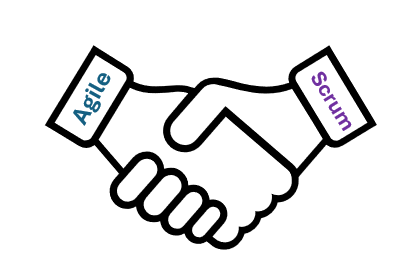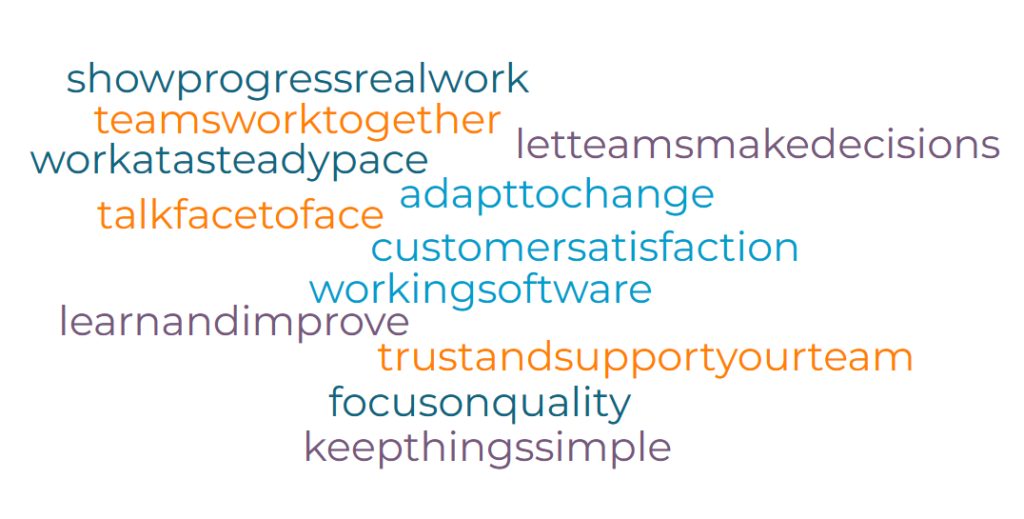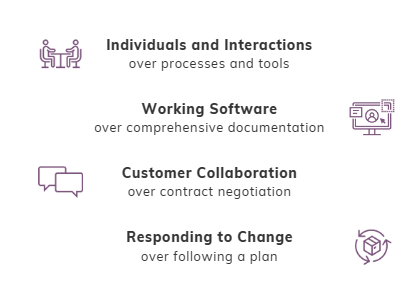Project Management Series: Understanding Agile and Scrum

In the world of project management, Agile stands out as a game-changer, transforming how teams work together and achieve success. At its core, Agile is guided by 12 key principles and four core values, which are the foundation of its approach. Let’s break down these principles and values in simpler terms to understand what they mean.
Agile 12 Principles

The 12 Agile principles are foundational guidelines that underpin Agile methodologies, emphasizing customer satisfaction, adaptability, teamwork, and continuous improvement. They prioritize delivering value to customers early and often, welcoming change, fostering collaboration, supporting motivated individuals, promoting face-to-face communication, showing progress through working software, maintaining a sustainable pace, focusing on technical excellence, embracing simplicity, empowering self-organizing teams, and encouraging reflection and adaptation. These principles drive Agile teams to deliver high-quality products that meet customer needs while fostering a culture of collaboration, transparency, and continuous improvement.
Agile Core Values

The core values of Agile encapsulate its foundational beliefs, emphasizing individuals and interactions over processes and tools, working software over comprehensive documentation, customer collaboration over contract negotiation, and responding to change over following a plan. These values prioritize people and their interactions, tangible outcomes, collaboration with customers, and adaptability to change, guiding Agile teams to deliver value effectively and efficiently in dynamic environments.
Scrum Events

Scrum events are essential meetings within the Scrum framework that facilitate collaboration, communication, and progress tracking. These events include Sprint Planning, where the team plans the work for the upcoming sprint; Daily Standup, a brief daily meeting for team members to synchronize and discuss progress; Sprint Review, where the team showcases completed work to stakeholders and gathers feedback; Sprint Retrospective, a meeting to reflect on the sprint and identify opportunities for improvement; and Backlog Refinement, where the team refines and prioritizes items in the product backlog. These events ensure alignment, transparency, and continuous improvement throughout the project lifecycle.
Scrum Team

The Scrum team is a crucial element of the Scrum framework, comprising three key roles: the Product Owner, Scrum Master, and Development Team. The Product Owner represents stakeholders and prioritizes work, ensuring that the team delivers value to customers. The Scrum Master facilitates the Scrum process, removes impediments, and coaches the team on Agile principles. The Development Team is cross-functional and self-organizing, responsible for delivering the product increment. Together, these roles collaborate closely to achieve project goals, foster continuous improvement, and deliver high-quality products.
In conclusion, the Agile methodology, with its 12 principles and core values, provides a flexible and customer-centric approach to project management. By prioritizing collaboration, adaptability, and delivering value, Agile enables teams to respond effectively to change, deliver high-quality products, and satisfy customer needs. Additionally, the Scrum framework, with its defined events and team roles, offers a structured approach to implementing Agile principles in projects. With a focus on transparency, communication, and continuous improvement, Agile and Scrum empower teams to navigate complexities, foster innovation, and achieve success in today’s dynamic business environment. Here at Knack, we created an easy-to-read cheat sheet going over all of these areas. (Download here)